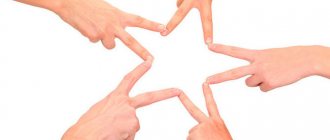It is already known that all emotions are reflected in one way or another on the functioning of the body. Body-oriented psychotherapy has come a long way in both the East and the West. It gained popularity only after Sigmund Freud’s student, Wilhelm Reich, chose to move away from psychoanalysis and study ways to influence the body. Body therapy allows you to find tense points in the human body and through them identify the sources of experiences. And then localize and heal them. In fact, it allows you to save a person from the consequences of negative experiences.
Body-oriented psychotherapy can be trained by qualified psychologists, psychotherapists and doctors. And also people who want to understand the reactions of their body, learn relaxation and self-help by mastering simple but effective exercises. Interaction with the human body is used to improve his mental well-being. Moreover, for this purpose a huge number of different methods are used, which make it possible to alleviate the patient’s condition.
Articles on the topic
What are the causes of stress and how to avoid provoking situations?
27.09.2020
Post-traumatic stress is a bomb that can destroy a person
27.09.2020
Main types and symptoms of stress
27.09.2020
Depression and apathy - what is the difference and how to avoid such conditions
11.09.2020
Basics of the method of body-oriented psychotherapy
One of the main advantages of this unique method is its high efficiency. This independent direction in psychology has its own theoretical basis and many practical developments. The peculiarity of this type of psychotherapy is expressed in its consideration of a person’s personality. It appears as the unity of body, soul and mind.
A person is not used to separating his personality from his body. From a very early age, the child’s awareness and his subsequent growth are associated with the body, which is the repository of all emotional experiences and various sensations. General tightness and stiffness of movements, stooping are peculiar evidence of a person’s character, which his body demonstrates to those around him.
Body-oriented psychotherapy recognizes body memory. The body responds to all experiences, disorders and nervous breakdowns of a person with blocks and tension. Bodily tensions are the consequences of negative situations and conflicts, suppressed emotions that had no outlet.
The task of a physical psychotherapist is to thoroughly reveal the causes that contribute to the emergence of psychological problems. He finds and releases the emotions recorded in the body and thus destroys the clamps.
Novelty of the approach
Reich proposed an innovative method of solving the problem by targeting a tense muscle group. Special techniques have been developed to reduce chronic tension in each muscle group and release repressed emotions through physical stimulation. Typically, pinch massage is used for this. And so, moving down the body, the patient is helped to break the “muscular shell”. That is, the basis of this teaching is the concept of organ energy. Energy must move freely from the core of the body to the periphery and leave. Blocks, or clamps, interfere with its natural flow, they serve to distort and destroy natural feeling, this also applies to the suppression of sexual feelings.
In what cases is body-oriented psychotherapy indicated?
Sometimes it happens that a person loses contact with his body to such an extent that he ceases to understand his feelings. And he expresses them based only on prompts from consciousness. But there can be serious differences between those imposed by consciousness and one’s own sensations, which again develop into conflict. Therefore, working with the body is very important for normal personality development.
Body-oriented psychotherapy is recommended in the following cases:
- severe stress and conflicts in the family;
- difficulties in the workplace, poor relationships with superiors and colleagues;
- general apathy, loss of meaning in life;
- irritability and aggressiveness;
- obsessive and disturbing thoughts;
- long-term illness, systematic colds.
The use of this therapy is not a replacement for medical or surgical treatment.
Body-oriented psychotherapy exercises recommended by a specialist improve work with muscle tension and blocks. Returning the body to a harmonious state allows you to solve psychological problems.
SOUL AND BODY: SYSTEM APPROACH
The modern period of development of human sciences, including psychology, is characterized by the desire to understand the body as an integral system. In accordance with the holistic (holistic) approach, all functions of the body and psyche are interconnected. To consider a personality as a whole means to consider a personality in all its aspects (body, psyche, thinking, feelings, imagination, movement, etc.), but this is not the same as considering a personality as the sum of its individual parts. It is necessary to perceive a personality as an integrated functional unity of various aspects of the whole in time and space.
Nevertheless, it is necessary to recognize that our culture is dominated by a disdainful attitude towards the body and a denial of bodily instinctual functioning. We more often perceive our body as an object, and not as our “I”, because our perception, our thinking, our emotions, our beliefs and intuition, our behavior - all of this is subject to powerful shaping influence from society. Most of us sometimes, then they constantly punish, hate or ignore their body. Western civilization takes this for granted, although this was not always the case and is not the case in other cultures. The way a person lives in his body is influenced by numerous and varied reasons. These are the lived experiences and underlying beliefs and beliefs that prevailed in the family and educational system. Cultural traditions also reinforce our relationship to the body. At the same time, an ambivalent attitude towards the body can be traced throughout the existence of human civilization.
PSYCHOLOGICAL-ACMEOLOGICAL TRAINING
MATURE PATHEN AND MATERNITY
Author's development by Natalia Vasilievna Borovikova
Moscow - 1998
Creative acmeolization training
| Lesson No. 1 I. The ritual of creating a group Adopting the rules for working in a group – 15 min. Since ideally the group meets to work together for the third time, the participants can be asked to develop the rules for the existence of the group themselves, taking into account previous weaknesses. At this stage of the training, the development of rules of life within the group can be turned into an independent group procedure. |
The presenter should remember the basic rules:
- Don't be late.
- Take care of the confidentiality of group life.
- Strive to be an active participant in what is happening.
- Do not give up the right to say “no”, as well as the right to decide for yourself how to behave in a given situation. This rule is often proposed by participants in whose training pair disagreements arose during previous sessions.
- Be sincere.
- Have the right to receive support and assistance from the group.
- Try to listen to the speaker, trying not to interrupt.
- Orient yourself to be active by participating in all events, procedures, situations that arise during the work of the group.
- Have the right to express your opinion on any issue.
- Use the “you” address during group work.
- Report your difficulties that interfere with the work of the group (the need to miss a lesson, arrive or leave early).
- Speak on your own behalf (not on behalf of the couple) and about what is perceived, felt, and happening here and now.
- Do not talk about those present in the third person.
- All group participants are equal, i.e., the training partner of a pregnant woman performs body-oriented exercises on an equal basis with everyone else.
II. Group bonding exercises
Exercise “All the faces are familiar!” – 5-7 min.
Instructions. The name card rule remains the same, but each participant can change the name. If the group has worked in this composition before, then you can invite everyone to write down the training names of the remaining participants and the expected changes on a separate sheet. After the whole group has completed the task, do the participants attach new or old cards? Everyone speaks out in a circle, or at will.
The discussion proceeds as follows:
– what has changed significantly since the last meeting?
– what made you change your name?
– how many coincidences of your predictions did you count?
– why, (name of the participant on the card), did you expect that (name of the participant on the card) would change his name?
III. Mutual Perception Exercise
Exercise “Siamese twins” – 15 min.
Goal: to obtain a specific sensory experience of distinguishing the image of another person, built on one’s own system of conjectures, expectations, generalizations and real impressions of this person.
Instructions. The training couple (volunteered at will) agrees among themselves who will now be responsible for whom. Group questions posed to one person are answered by another, trying to guess how his partner would answer his questions. The partner listens and mentally notes where the participant responsible for him was right and where he was wrong. It is advisable that all training pairs complete the exercise.
You can ask any questions, but preferably focused on the difficulties of raising children, the ambiguity of the pregnancy period, fears of motherhood and fatherhood, upcoming births, professional self-determination of a woman after the birth of a baby, etc. Questions are formulated in the form of unfinished sentences: “If my child does not obey me, then...”, “If I don’t have milk,...”, “I’ll go to work when...”, etc.
Discussion of the results proceeds according to the following scheme:
1. Impressions of the silent partner (he reports qualitative coincidences and errors that struck him).
2. Impressions of the responding partner (he notes why it was easy to answer and why it was difficult).
3. The group discusses why this particular couple was asked these questions and not others.
4. Discussion of the impressions and expectations of the participants who asked questions.
IV. Body-oriented exercises
From 17 to 31 weeks, special attention is paid to exercises aimed at strengthening the abdominal and back muscles, which bear the load due to a shift in the center of gravity, as well as the foot muscles due to possible flattening and flat feet. To do this, movements are used that help increase the flexibility and plasticity of the spine and pelvic joints, while many exercises are performed with a gymnastic stick.
Exercise “Metronome” – 10 min.
Goal: to teach group members to regulate their heart rate.
Instructions. To do this, you need to adjust the breathing rate according to the pulse so that the duration of inhalation and exhalation corresponds to a certain number of pulse beats. For example, 3 pulse beats on inhalation and 3 on exhalation. Then we begin to change the rhythm of breathing, sometimes speeding it up, sometimes slowing it down, still controlling the rhythm of breathing. If the pulse rhythm changes when breathing changes, the goal of the exercise has been achieved.
V. Analysis of homework and discussion of work results
- 10 min.
It follows the scheme described in previous trainings. One of the facilitator’s questions addressed to the group boils down to the following: “What is essential and necessary for your development as a mother and father does not happen during the training?”
Homework
- Write down all your successes during pregnancy.
- Develop a sketch of clothing that would prevent depression during pregnancy and provide comfort to the unborn baby.
Lesson No. 2
I. Group bonding exercise
Exercise “Tandem” – 10 min.
Goal: to teach group members mutual understanding and attentiveness to each other.
Instructions. Participants play in training pairs. The task is to learn to throw out the same number of fingers at the same time, without first agreeing. The pair that has achieved the highest mutual understanding is considered to be the one that, during the demonstration, showed the largest number of coincidences in a row.
The remaining participants play the role of experts, trying to determine whether the speaking couple has any hidden means of communication that help reach agreement.
Exercise “Thermometer” – 5-7 min.
Goal: to develop tactile sensitivity, to evaluate self-regulation skills.
Instructions. The group is divided into pairs. One of the partners of each couple, through internal efforts and self-hypnosis, tries to slightly raise the temperature of one of his palms or cool the other. When, in his opinion, this has worked out, he makes a sign to his partner, who, by feeling his partner’s palms, must determine which palm is hotter. After this, the partners change roles.
II. Body-oriented exercises
Exercise “Nirvana” – 10 min.
Goal: conscious control over body sensations (the appearance of a feeling of coolness in the forehead).
Instructions. It is suggested to take several breaths through your mouth and feel the coolness of the inhaled air. When switching to normal nasal breathing, you should try to maintain a feeling of coolness when inhaling, especially in contrast to the exhaled air. Fixing attention on the temperature contrast creates a feeling of cool wind in the upper part of the face, breathing becomes easy and free. After performing this exercise, you get a feeling of a “rested brain.”
III. Analysis of video materials – 15 min.
Watching a video or photo album on the topic “Waiting for a Child,” made by one of the training couples.
IV. Analysis of homework and discussion of work results – 10 min.
During the discussion of the results of the work, the leader should be interested in how the child felt and showed himself in certain exercises. The question may sound like this: “What did our kids do while their mothers and fathers were doing the “Unison” exercise?
Homework
- Complete the drawing “My Family’s Safe Place.” To get around resistance, you can say that the best drawing will be used to illustrate a guide to successful motherhood and fatherhood.
- We continue to perform body-oriented exercises.
Lesson No. 3
I. Group bonding exercise
Exercise “Trick” – 5 min.
Goal: learn to concentrate. This exercise is very useful for pregnant women, because after 25 weeks of pregnancy, absent-mindedness increases and the ability to concentrate decreases.
Instructions. Participants place their hands on their knees and clap their palms on their knees in a rhythm set by the leader. Simultaneously with clapping in time with each clap, the group in unison counts the natural series of numbers from one and then in ascending order.
And for each clap, the next number in order is pronounced. The exceptions are the numbers 3, 13, 23 and all numbers that are divisible by three. Instead, participants must say the word “trick” and under no circumstances clap. The one who makes a mistake is eliminated from the game.
There is a slightly different option, in which each participant takes turns pronouncing the next number in order, accompanied by clapping his hands. The ban is the same numbers as in the previous version. Here the participant's error can be detected more easily.
II. Exercise on mutual perception and self-knowledge
The presenter introduces the concepts of life scenario and playing out a life scenario.
Exercise “Past, present, future” – 15 min.
Goal: creating the prerequisites for escaping a harsh life scenario for your children.
The game is one of the variants of the “hot chair” used in Gestalt therapy and first described by F. Perls, and subsequently interpreted by A. B. Dobrovich.
Instructions. Anyone interested is invited to sit in a chair conveniently positioned for public viewing. The others stare at him for a moment. Then the participants take turns sharing their impressions of the player sitting in the center.
First, the participants in the discussion tell the person sitting in the “hot seat” their guesses, conjectures and assumptions about what this person was like in early childhood. What diminutive names his mother and relatives called him, how he was teased at school, what kind of character he had, what he wanted to become, what his parents expected from him, etc.
Then the group tells the participant sitting in the “hot chair” its guesses and assumptions regarding what he is like outside of classes in this group (at work, in the family).
Finally, the group makes its predictions about what kind of parent this participant will be. What awaits his children in the future (in ten, twenty years).
After this, the floor is given to the participant sitting in the “hot chair”.
In addition to personal effects that correct the attitude towards oneself, this exercise has an impact on the system of naive psychological ideas of group members. In the most extreme, simplified version, the system of naive ideas may include beliefs in the rigidity of relationships such as: “if a person is rich, then it will be unwise to spoil his child,” “if a woman is beautiful, then she will be a bad mother,” etc.
III. Body-oriented exercises
We continue to practice dancing according to the method of Asidora Duncan (10 min.).
Instructions. Everyone (individually or in pairs with their training partner) can move in the most bizarre way, smoothly waving their arms, wobbling, making gentle movements with their legs, head, and whole body, as if telling their unborn child: “We love you. We need you. We will be good together."
When performing the “Triumph of Love and Kindness” exercise well, you can get several effects:
- participants master and inhabit the space in which they have to work;
- many relax, relieve some of the tightness and enslavement that prevent them from fully participating in work;
- The participants' creative imagination awakens, and a taste for free association may arise.
Music helps a lot, but only music that can ring in the memory and help cope with excess nervous tension during childbirth and breastfeeding.
“Spin” exercise to increase tension in the pelvic muscles – 2-3 min.
Goal: strengthen the muscles of the vagina and perineum, preparing them for childbirth. They also help during the postpartum period.
Instructions. Lying on your back, bend your knees at an angle of 30 cm, feet flat on the floor. The head and shoulders lie on a pillow (clothing cushion), arms along the body. The basis of the Kegel exercise is to tense the muscles in the anus and vagina and hold this position for as long as possible (8-10 seconds). Then - slow muscle relaxation and rest. This exercise can be (and after the fourth month is necessary, since a lying position is not recommended, given the adverse effect of the uterus on the large blood vessels) to be performed in a standing or sitting position, or while urinating. The exercise should be repeated at least 25 times during the day, at different times.
Exercise “Cat's back” – 2-3 min.
Goal: reduce the load on the spine.
This exercise is recommended throughout pregnancy, right up to childbirth, as it reduces the load on the spine from the pregnant uterus.
Instructions. While kneeling, you need to lean on your hands and relax your back muscles (without excessive bending of the spine). The head, neck and spine are in a straight line. Bend the spine upward with lowering the head and strong tension in the abdominal and buttock muscles. Gradual relaxation and return to the starting position. Repeat the exercise a couple of times.
III. Analysis of homework and discussion of work results – 10 min.
The fact of actualization and outburst of emotions when discussing the results of work, as is considered by ideologists and developers of group work of this type, is a strong corrective effect that promotes personal growth (F. Perls, K. Rogers, V. Satir).
Each pair submits a drawing of “My Family's Safe Place” and acts as an art editor advocating that particular sketch for a future book.
Homework
1. Draw a pregnant creature without clothes in the “Pregnancy Diary” (a non-existent one can be used). Performed by both partners separately.
2. Create an individual schedule of exercises, the order and choice of exercises in which will correspond to your pregnancy.
Lesson No. 4
I. Group bonding exercise
Exercise “Fly” – 5-7 min.
Goal: learn to concentrate.
Instructions. The presenter suggests trying to control and guide an ordinary fly sleeping on the window. A nine-cell field for playing tic-tac-toe is used as a window. Initially, the fly sits in the center of the window in the central cell. The fly performs the commands “up!”, “down!”, “right!”, “left!”. The fly cannot move diagonally.
The game is played for elimination. The participant whose move brought the fly beyond the boundary of the general surface of the field leaves the game. In this case, the controller (leader or group member) states: “The fly has flown away.”
II. Mutual Understanding Exercise
Exercise “The Joy of Recognition” – 15 min.
Instructions. Everyone is blindfolded and moves by touch. The colliding participants in the game feel each other, examining only the fingers of the partner they come across, and aloud express their mutual guesses about who it could be. Then they simultaneously open their eyes and check their assumptions.
The discussion proceeds as follows:
How does physical, tactile contact, isolated from other channels of perception, help to complement ideas about other participants, to discover already born attitudes, expectations, and cliches of perception?
How did pregnant women feel when their bellies were examined by group members? Was it difficult to feel free while blindfolded?
III. Body-oriented exercises
Exercise “Reaching High” – 3-5 min.
Instructions. While still sitting cross-legged, place your hands on your shoulders and then raise them high above your head. Alternately stretch your arms, trying to reach the ceiling. Repeat 10 times for each hand. The body cannot be balanced.
Exercise “Inner mirror” – 10 min.
Goal: learn to relieve emotional stress, irritation, anger using breathing.
Instructions. It is necessary to take a deep breath, hold the breath for pregnant women for 10 seconds, their training partner can hold it for 15, and then exhale sharply. The best effect of breathing exercises is achieved in combination with muscle tension, alternating with relaxation. For example: inhale, hold your breath, clench your fists. Tighten the muscles of your arms, legs, back, (not stomach); exhale sharply, relax all your muscles, make a few light shaking movements with your hands (as if relieving fatigue). We repeat several times, while pregnant women mentally turn to the child: “I control myself, my body, my emotions so that you are safe.”
While holding your breath, you can slightly puff out your cheeks and make swallowing movements. You also need to remember about your facial expression (an internal mirror will help rid your face of unnecessary muscle tension). For example, after inhaling, run your hand over your face, as if removing any remaining anxiety or irritation. Smile.
The following technique is also possible: run your hand over the neck muscles. If they are tense, tilt your head forward, backward, and make several rotational movements. You can lightly massage your neck. Lightly stroke the muscles from the shoulder to the ear. Lightly rub the behind-the-ear tubercles with your fingertips (this improves blood flow to the head and facilitates nervous discharge).
IV. Video analysis – 15 min.
Watching a film filmed by one of the training pairs.
V. Discussion of homework and work results – 10 min.
Homework
1. Bring a mirror to each participant for the next lesson.
Lesson No. 5
I. Group bonding exercise
Exercise “Reflection” – 10 min.
Goal: to allow participants to discover how others perceive their gaze and facial expression.
Instructions. The training participants form a circle. For the duration of the exercise, everyone becomes a mirror, reflecting (pedantically capturing and repeating all actions and expressions) of the one who looks into it. Group members walk around the “circle of mirrors” one at a time, looking in each of the “mirrors” in turn.
The reasons why a person looks in the mirror can be announced by the presenter:
- You woke up this morning. Let's go to the bathroom to wash up. You do this in front of a mirror;
- now you brush your teeth;
- You have a sore throat and you are trying to see through the mirror whether you have inflammation.
Or another plan:
- You are afraid that you have gained noticeable weight and look carefully at yourself in the mirror;
- You preen yourself before entering the boss;
- Your significant other is about to arrive and you want to look at yourself one last time.
II. Self-acceptance exercise
Exercise “Chameleon” – 10 min.
Goal: learn to voluntarily control facial expression.
Instructions. The group members pick up a mirror and, looking into it, take on various facial expressions. The presenter suggests recording in what mood everyone likes his appearance best, then in what mood he doesn’t like it. Now we build (constantly looking in the mirror) the image of smart and insightful parents.
The presenter suggests topics. The look on my face when my baby:
– continuously cries and is capricious;
– doesn’t want to come into my arms;
– peed himself in an unforeseen situation;
– took the first step;
– received a rating of “5”, etc.
III. Body-oriented exercises – 20 min.
One of the training pairs conducts it using its own methodology, or repeating all the learned body-oriented exercises.
IV. Discussion of the training results – 20 min.
Before parting, everyone should wish each other an easy birth, healthy babies and happy parenthood.
Homework
Homework requires the active cooperation of your spouse or other family members. Often, training participants fail to complete their homework. There are several reasons for this, ranging from poorly designed assignments to resistance to change. The reasons for non-compliance (reasons for “non-compliance”) should be analyzed during the homework discussion. Another possibility is that the spouse is uncooperative and even tries to sabotage the training. One of the benefits of including your spouse in the training is that their resistance is quickly exposed and can be addressed directly during the session. A marital partnership (training couple) may be necessary to resolve interpersonal conflict that may be blocking changes in the pregnant woman's self-concept.
The actions of group members during training sessions do not create conditions for deep personal changes. They are a source of important experiences that mobilize the process of change and formation of the self-concept, but we are convinced that they require continuation and development in the normal conditions of everyday life.
Homework should be aimed at specific symptoms of psychological pregnancy syndrome. During the break between trainings, the facilitator may suggest the following:
- Write down in your “Pregnancy Diary” every day any thoughts that come to mind in connection with pregnancy, regardless of the benefits of such information (this could be a project on how to put a pillow to make it easier to sleep, to the possibilities and benefits that can be obtained from the state of pregnancy).
- Draw a picture on the topic: My idea of a pregnant woman and one who has never been pregnant. Performed by both participants in the training dyad.
- Participants are invited to make a retrospective analysis of their childhood (based on their own memories, stories from those close to them, surviving drawings, diaries, photographs) and create an ideal model of their child’s life. It would be nice if grandparents drew up a model of the future for their grandson (granddaughter).
The function of a projective drawing is not only to provide additional material for discussion, it helps to identify and understand difficult-to-verbalize problems and experiences, and diagnose changes in the attitude of group members to the process of pregnancy and parenthood.
Types of bodily shell
Despite such a huge number of techniques, almost all of them rely in their theoretical basis on those types of bodily armor that Wilhelm Reich once identified.
Ophthalmic
What's included: eyes, eyebrows, forehead, scalp.
External signs of the shell:
- feeling of a motionless mask on the face,
- running glance,
- the person never looks into the eyes,
- deep vertical wrinkles on the bridge of the nose and multiple wrinkles on the forehead.
Internal problems: social fears, inability to establish interpersonal contacts.
Somatics: vision problems, headaches, tearfulness.
Oral/maxillary
What's included: back of the head, chin, throat.
External signs:
- tense jaw,
- grimacing,
- habit of always chewing gum,
- "shaking nodules"
- reticence.
Internal problems: secrecy, the need to keep everything to yourself, restrain anger.
Somatics: usually no complaints.
Throat/cervical
What's included: tongue, neck.
External signs:
- neurotic cough,
- quiet voice,
- frequent swallowing.
Internal problems: the same as with a jaw clamp, but deeper, going back to childhood (for example, resentment towards parents).
Somatics: frequent sore throats, constant lump in the throat.
Chest
What's included: chest, shoulders, shoulder blades, arms.
External signs:
- labored breathing,
- incorrect posture,
- unnatural position of the shoulders (lowered, raised, asymmetrical),
- lack of body flexibility.
This is interesting! According to body-oriented therapy, anyone can check their acquaintances for the presence of a chest shell and thereby determine whether they are happy or not. To do this, just call out to him when the person’s back is to you. If he turns his whole body, the clamp and problems are obvious. If he turns only his head or only the upper part of his body, he is fine.
Internal problems: suppression of basic human feelings - love, dreams, jealousy, hobbies. In socially oriented therapy, the chest shell is evidence that the patient is deeply unhappy.
Somatics: shoulder pain, shortness of breath, hyperhidrosis of the palms.
Diaphragmatic
What is included: diaphragm, solar plexus, lower vertebrae.
External signs:
- scoliosis,
- difficulty in exhaling.
Internal problems: prohibition on expressing feelings of disgust and disgust. Often this type of shell is observed in those who are forced to live, work or simply communicate with an unloved and even disgusting person.
Somatics: frequent vomiting, pulmonary diseases.
Abdominal
What's included: belly, back.
External signs: protruding, large belly.
Internal problems: fear of attack, anger, hostility.
Somatics: obesity, digestive problems.
Pelvic
What's included: pelvis, lower limbs.
External signs:
- the pelvis protrudes backwards
- tense buttocks,
- half-bent gait.
Internal problems: inability to satisfy arousal, suppression of sexual pleasure, feeling of threat to life.
Somatics: weak, wobbly legs, trembling knees.
Therapy for children
This is a separate direction - body-oriented therapy for children. Exercises in this case are aimed at increasing self-confidence, developing creative abilities and the ability to accept oneself as an individual. They are usually carried out in groups. Don't forget where body-oriented therapy begins. Breathing exercises must be included in the lesson plan. After the breathing warm-up, you can play “cake”. One child is asked to lie on the floor. We will make a cake from it. All other children are eggs, sugar, milk, flour. The presenter is the cook; he alternately covers the future cake with ingredients, pinching and stroking it, “sprinkling”, “watering” and “kneading”. Then all the participants, led by the cake, breathe like dough in the oven, and then decorate the cake with flowers. They can be painted on hands and feet. Now everyone is telling me how beautiful and delicious the cake turned out.
Now you need to move a little. The presenter invites the children to climb a high and steep mountain. As the children march around the room, he tells them the path they are taking. As they walk along the sunny path, they notice many fragrant flowers. At the same time, the sun's rays touch the hair and bring peace and relaxation. As the mountain gets steeper, the breeze blows across your face, and with every step you feel the joy of anticipation of something new. One more step and you are at the top. A bright light embraces you and you feel like you can now do anything. A great feeling of joy, happiness, love and security comes over you. You yourself are this light, everything is in your power. You can finish the lesson with the “sprout” exercise.










